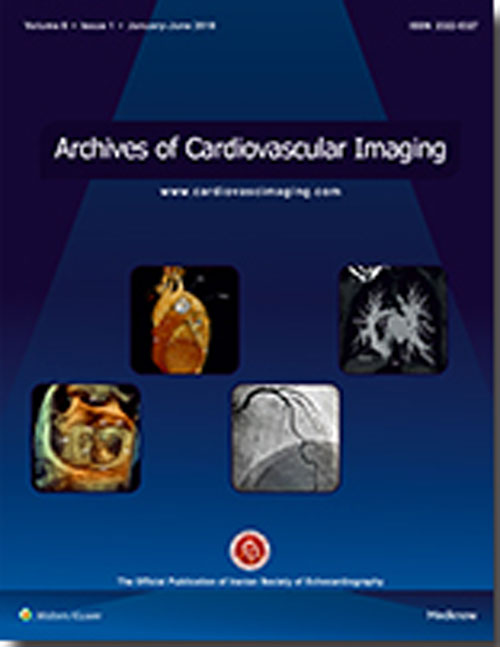Assessment of Right Ventricular Function by Tissue Doppler, Strain and Strain Rate Imaging in Patients with Left-Sided Valvular Heart Disease and Pulmonary Hypertension
Author(s):
Abstract:
Background
Pulmonary artery hypertension is the presentation of various types of cardiovascular and systematic diseases. There are different kinds of noninvasive methods to determine right ventricular function, pulmonary artery pressure, and effect of pulmonary hypertension on right ventricular function. These methods include the tissue Doppler imaging (TDI) of the tricuspid annulus and the longitudinal deformation indices of the right ventricular free wall..Objectives
In some patients, the echocardiogram cannot help estimate pulmonary artery pressure. In this study, we evaluated the effect of pulmonary hypertension on the TDI of the tricuspid annulus and the longitudinal strain and strain rate of the basal segment of the right ventricular free wall in patients with left-sided valvular heart disease and pulmonary hypertension. Indeed, we sought to investigate whether we can guess the presence of pulmonary hypertension through the measurement of the TDI of the tricuspid annulus and the deformity indices of the basal segment of the right ventricular free wall..Patients and Methods
Eighty consecutive patients with left-sided valvular disease and pulmonary artery hypertension (V/PH Group) and 80 healthy matched controls (H Group) were enrolled in this research. The TDI parameters were obtained in the tissue velocity imaging mode during systole (S, S VTI), early relaxation (E), atrial systole (A), and isovolemic relaxation time (IVRT). The deformation indices included peak systolic longitudinal strain and strain rate measured from the basal segment of the right ventricular free wall and were calculated as the relative magnitude of segmental deformation..Results
S, E, and S VTI were reduced significantly in the V/PH Group, and there was a significant negative correlation between S velocity, S VTI with pulmonary artery systolic pressure (PASP), and right ventricular diameter (RVD). According to the ROC curve, S velocity 10.5 cm/s had 65% sensitivity and 40% specificity for the prediction of pulmonary hypertension. E velocity had only a negative significant correlation with RVD and no significant correlation with tricuspid annular plane systolic excursion (TAPSE) and PASP. There was no significant difference in A velocity and E/A ratio between the two groups (P = 0.455 and P = 0.070, respectively), and these parameters had no significant correlation with RVD and TAPSE. IVRT was significantly increased in the V/PH Group versus the H Group, and IVRT > 40 ms had 78% sensitivity and 67% specificity for the prediction of pulmonary hypertension. In comparison with the H Group, RV longitudinal peak systolic strain (-14/35 ± 4%) and strain rate (-0.65 ± 0.12) at the basal segment of the right ventricular free wall were significantly lower in the V/PH Group (P < 0.001 and P < 0.001).. Conclusions
We observed a significant reduction in S, E velocity, and S VTI of the tricuspid annulus. Moreover, the strain/strain rate of the basal segment of the right ventricular free wall had a marked decrease in the V/PH Group in comparison with the healthy subjects..Keywords:
Language:
English
Published:
Archives Of Cardiovascular Imaging, Volume:2 Issue: 1, Feb 2014
Page:
13737
magiran.com/p1240936
دانلود و مطالعه متن این مقاله با یکی از روشهای زیر امکان پذیر است:
اشتراک شخصی
با عضویت و پرداخت آنلاین حق اشتراک یکساله به مبلغ 1,390,000ريال میتوانید 70 عنوان مطلب دانلود کنید!
اشتراک سازمانی
به کتابخانه دانشگاه یا محل کار خود پیشنهاد کنید تا اشتراک سازمانی این پایگاه را برای دسترسی نامحدود همه کاربران به متن مطالب تهیه نمایند!
توجه!
- حق عضویت دریافتی صرف حمایت از نشریات عضو و نگهداری، تکمیل و توسعه مگیران میشود.
- پرداخت حق اشتراک و دانلود مقالات اجازه بازنشر آن در سایر رسانههای چاپی و دیجیتال را به کاربر نمیدهد.
In order to view content subscription is required
Personal subscription
Subscribe magiran.com for 70 € euros via PayPal and download 70 articles during a year.
Organization subscription
Please contact us to subscribe your university or library for unlimited access!


